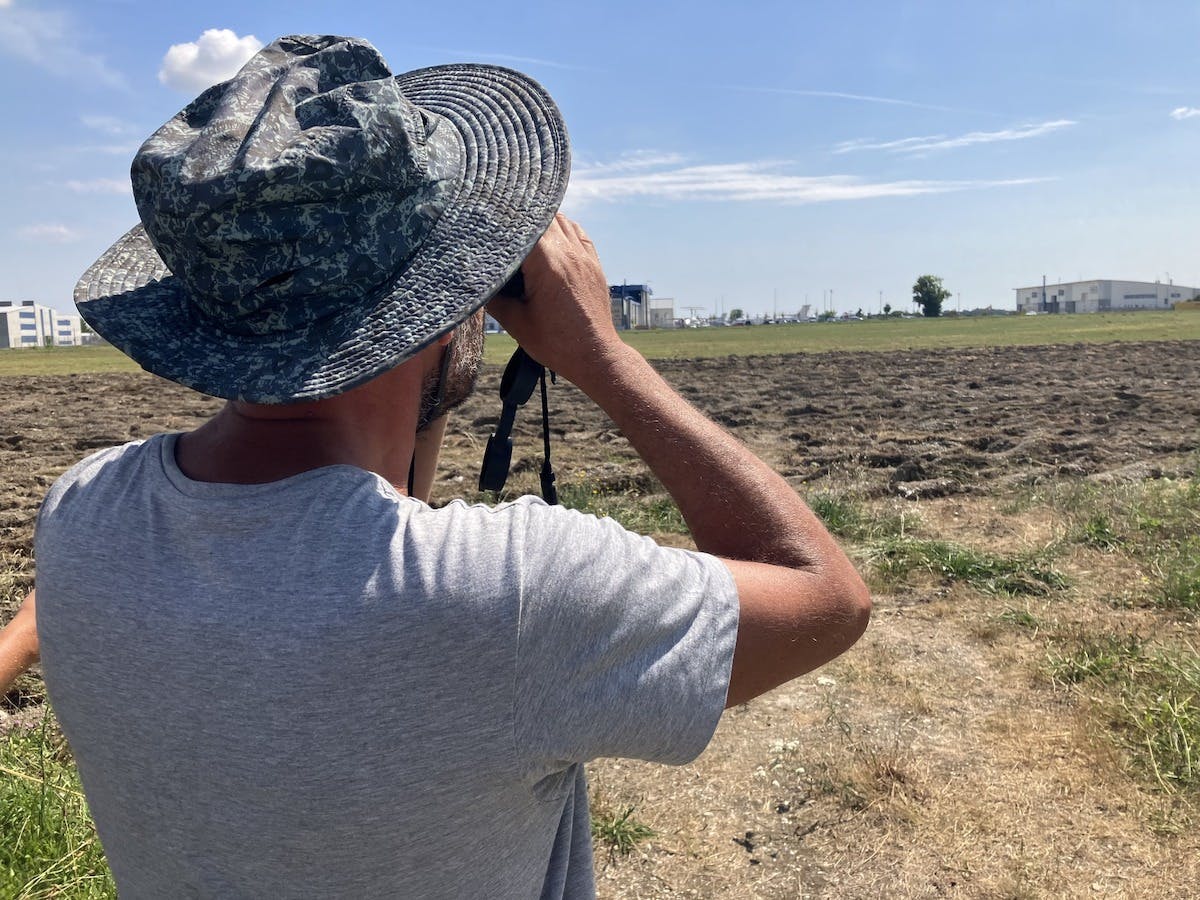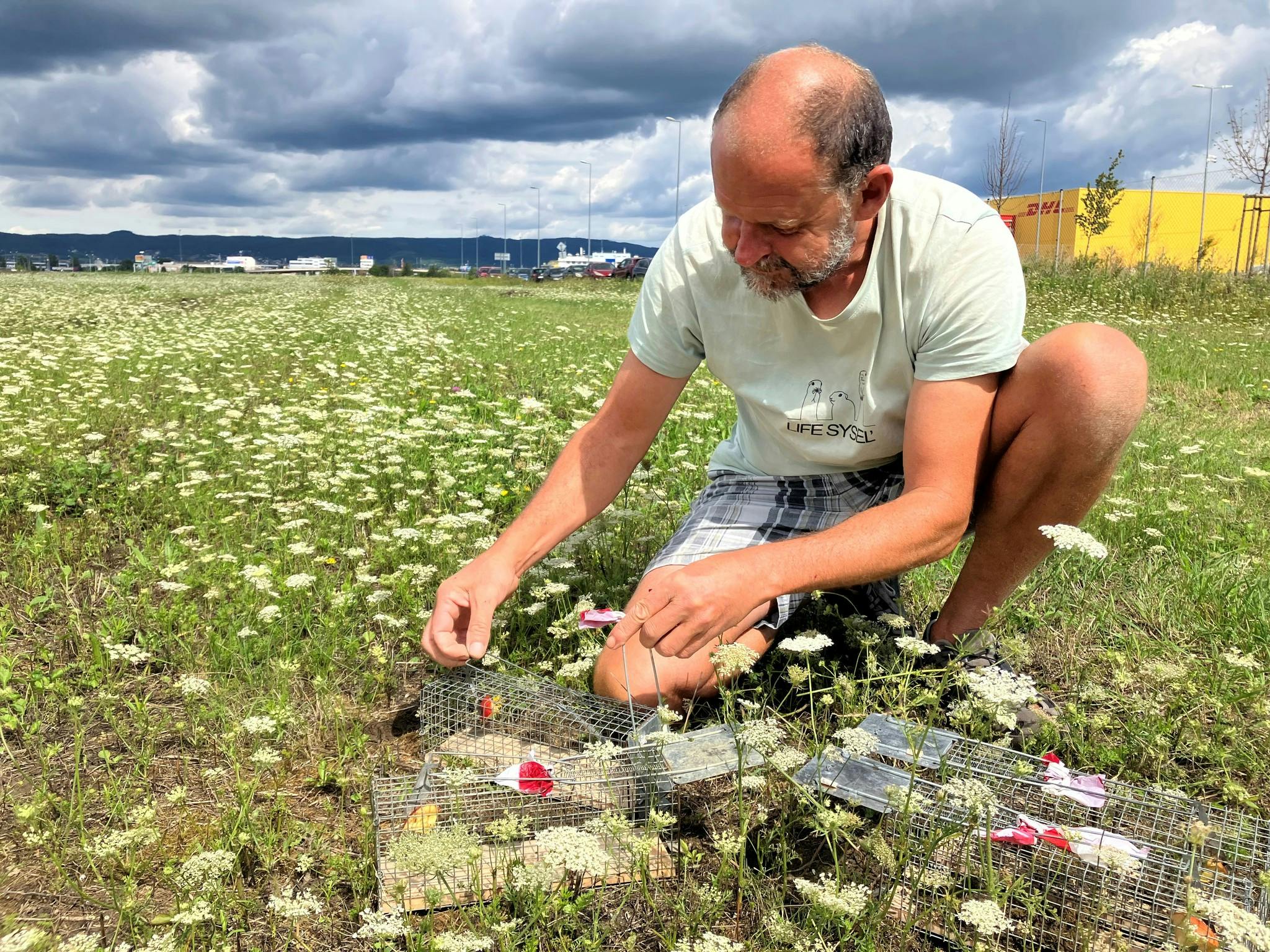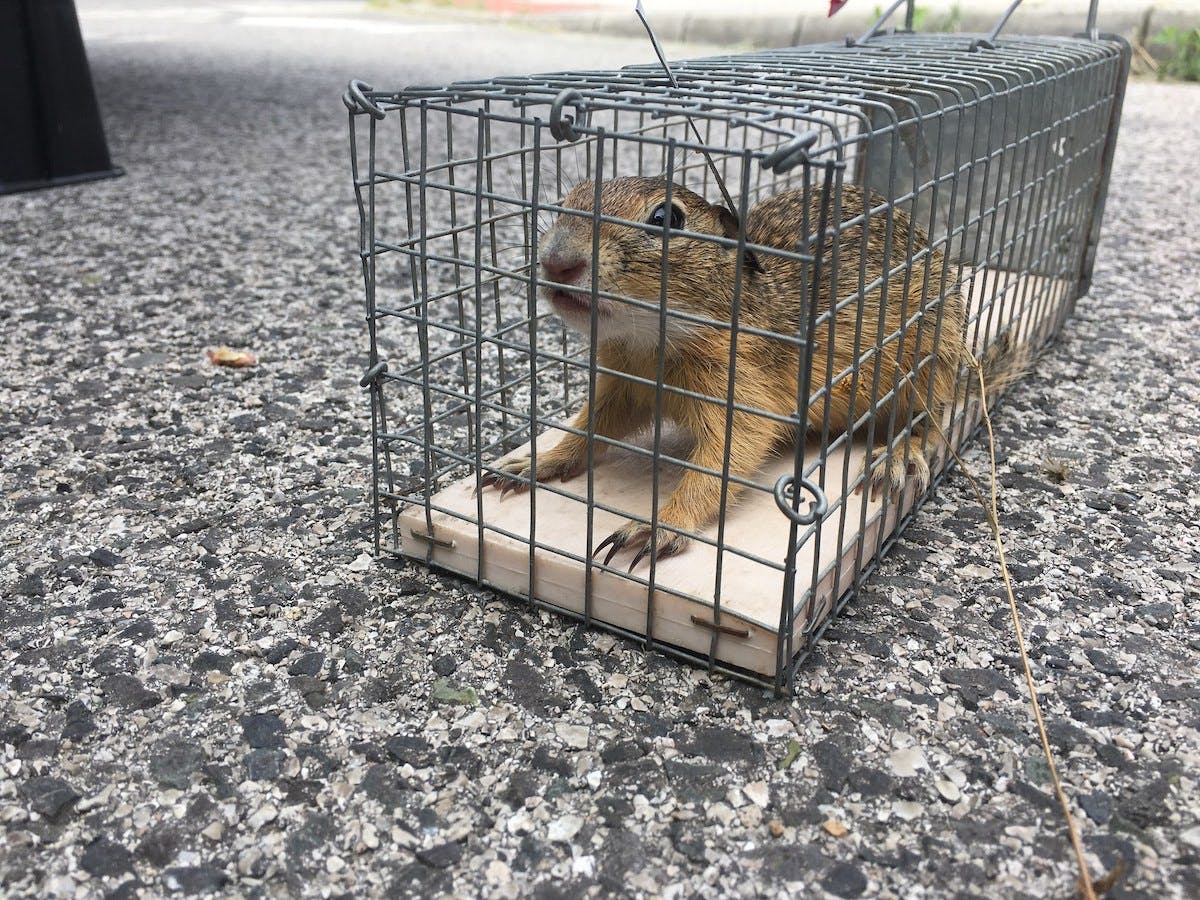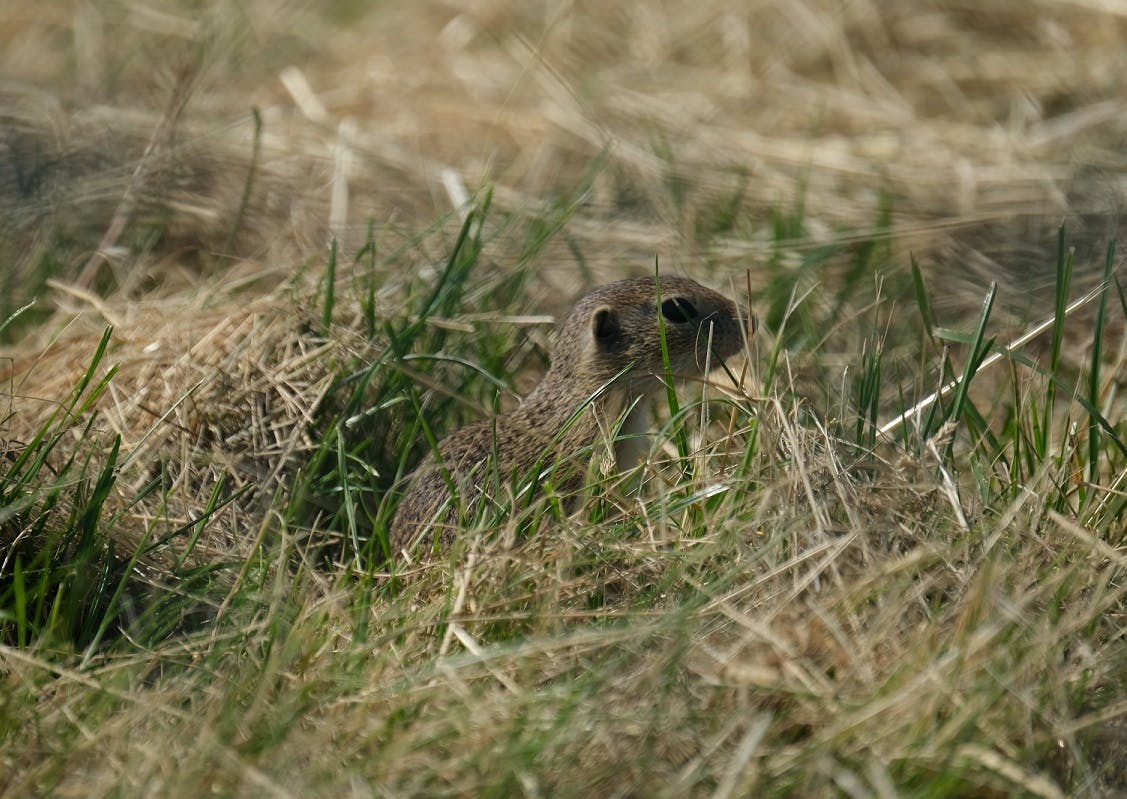- Management Plan
- Total budget: £59,075
- Budget spent: £23,377
- Status: In Progress
The European ground squirrel, aka the European souslik (Spermophilus citellus), is a charismatic rodent iconic to the open steppe grasslands of southeastern Europe. They are regarded as an umbrella species, which means having healthy squirrel colonies positively impacts other species in the ecosystem. Unfortunately, the numbers of ground squirrels are declining rapidly in much of the species range due to a destructive combination of habitat loss, degradation and fragmentation. In Slovakia, populations, which had numbered in the millions, have declined by 99% in just 50 years, making the species critically endangered. However, restoration efforts led by BROZ have seen remarkable results, doubling the number of ground squirrels in just 2 years. Translocating ground squirrels is believed to be a key factor to this success. Mossy Earth is proudly supporting the next series of translocations aimed at mimicking natural dispersal cycles and ensuring gene flow between isolated populations.
Project Timeline
Summer 2025
703 grounds squirrels translocated bringing the total in 2025 to 1031. Most of the translocations were done in eastern Slovakia with the healthy colony at Muranska planina as the source. In western Slovakia, 9 squirrels were translocated.
Spring 2025
The spring trapping season was impacted by an outbreak of foot-and-mouth disease (FMD), limiting access to several sites and resulting in 328 squirrels relocated.
A Charismatic Grassland Creature
Characteristics & Behaviours
Attractive to the eye, this small, bushy-tailed rodent likes to sit upright on its hind legs to peer across fields with its large, dark eyes on the lookout for predators. They are slender animals, equipped with strong legs and sharp claws, enabling them to excavate tunnel systems up to 2 metres deep with multiple entrances. Working together, they alert the colony to danger by letting out a distinct call allowing them to scuttle and seek shelter from predators.
They hibernate individually in their underground chambers during the winter where they draw on vital body fat stores (using up to 90% of stores). This makes summer a crucial time when squirrels need to forage for a large part of the day to build up fat reserves. When they are not foraging, ground squirrels are busy burrowing, grooming, scurrying around, scent marking or looking out for danger. Contrary to popular belief, ground squirrels do not take seeds from fields to stock for winter as they hibernate in the winter months.
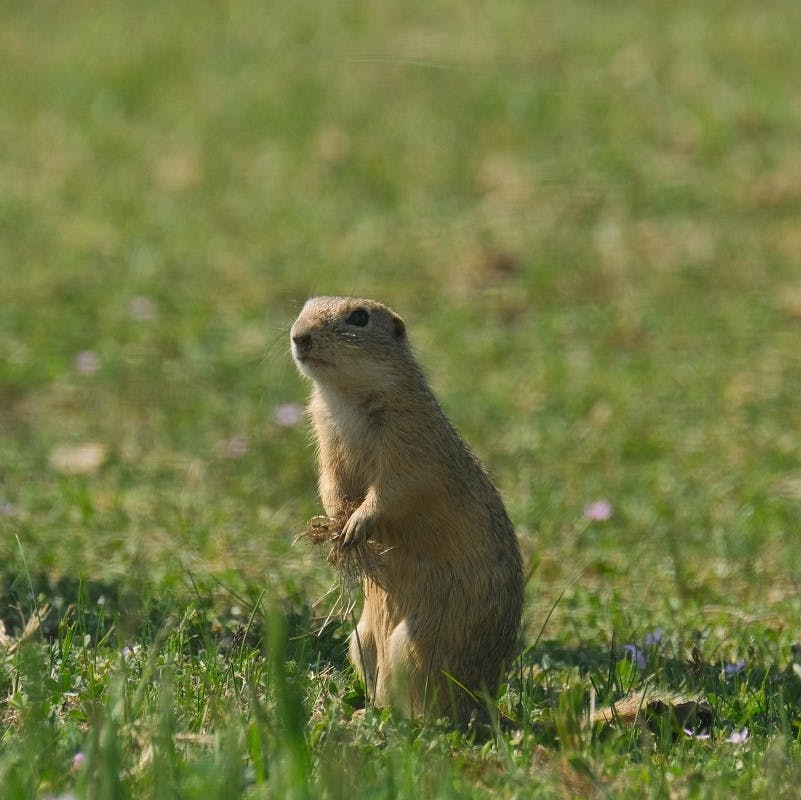
Range and Habitat
The European ground squirrel’s main range of distribution covers south-eastern Europe. Their range is divided by the Carpathian Mountains: to the west it extends to Czech Republic, Austria, Slovakia and Hungary into the Pannonian area of Serbia and Croatia; and to the east, the Transcarpathian region of Ukraine, Romania, part of Moldova, Bulgaria, south-east of the Former Yugoslav Republic of Macedonia (FYROM), north-east of Greece and the European part of Turkey.
Typical habitat of the European ground squirrel is in the open, non-forested steppe grassland landscapes. Since many grasslands in Slovakia have been lost to agriculture and urbanisation, airports, golf courses and playgrounds have become modern day refuges for the remaining ground squirrel colonies. Slovakia’s largest ground squirrel colony (an estimated 15,000) lives at the Bratislava airport where they are safe from the threats of agriculture and urban sprawl. Other endangered species, like the grey partridge, also prosper in these man-made environments as they are mowed regularly to keep the grass suitably short (so they can spot predators) and are not treated with poisonous agrochemicals.
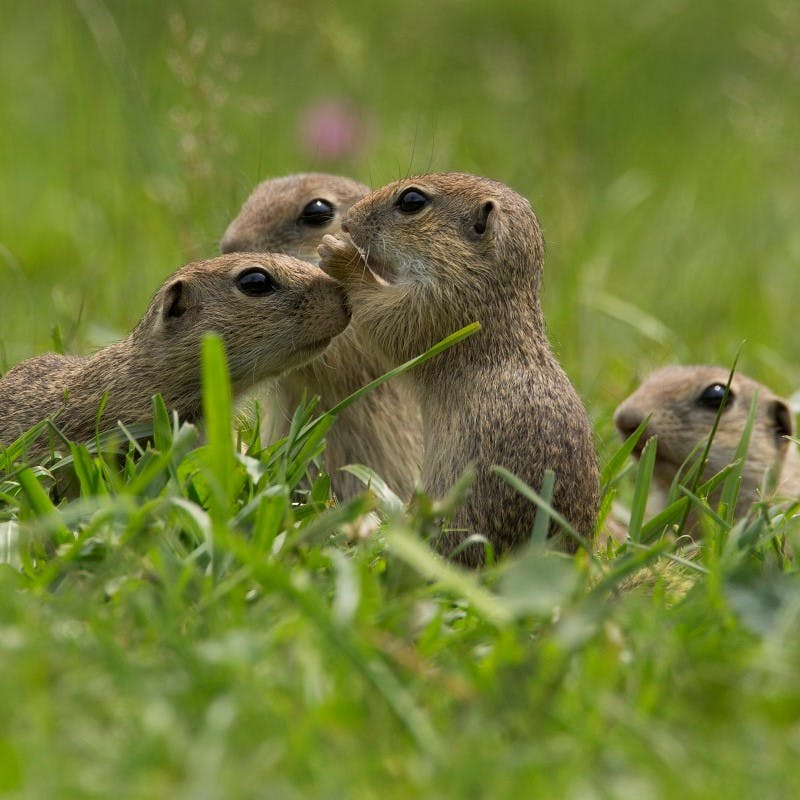
An Important Figure of Grassland Ecosystems
As well as being a lovable, endemic animal, the European ground squirrel can some extent be considered a keystone species. Although not fundamental for maintaining the ecosystem, its presence supports other species of mammals, birds and insects and helps to limit the spread of invasive plant species. When ground squirrels vacate their burrows, others opportunistically move in. The European green toad (Bufotes viridis) or the smooth snake (Coronella austriaca) are two protected species that take shelter in empty ground squirrel burrows.
Ground squirrels are an important prey for predators such as foxes (Vulpes vulpes), wild cats (Felis silvestris) and birds of prey such as the imperial eagle (Aquila heliaca), lesser spotted eagle (Aquila pomarina) and the saker falcon (Falco cherrug). Certain rare species have also learnt to co-exist with European ground squirrels. This includes coprophagous species that feed on ground squirrel’s excrements such as beetles (Ontophagus vitulus and Aphodius citellorum).
The ecological impact of ground squirrels also extends to some plant communities. As an important consumer of plant matter, they help control the spread of some species, including invasive species like the harmful silver-leaved nightshade (Solanum elaeagnifolium).
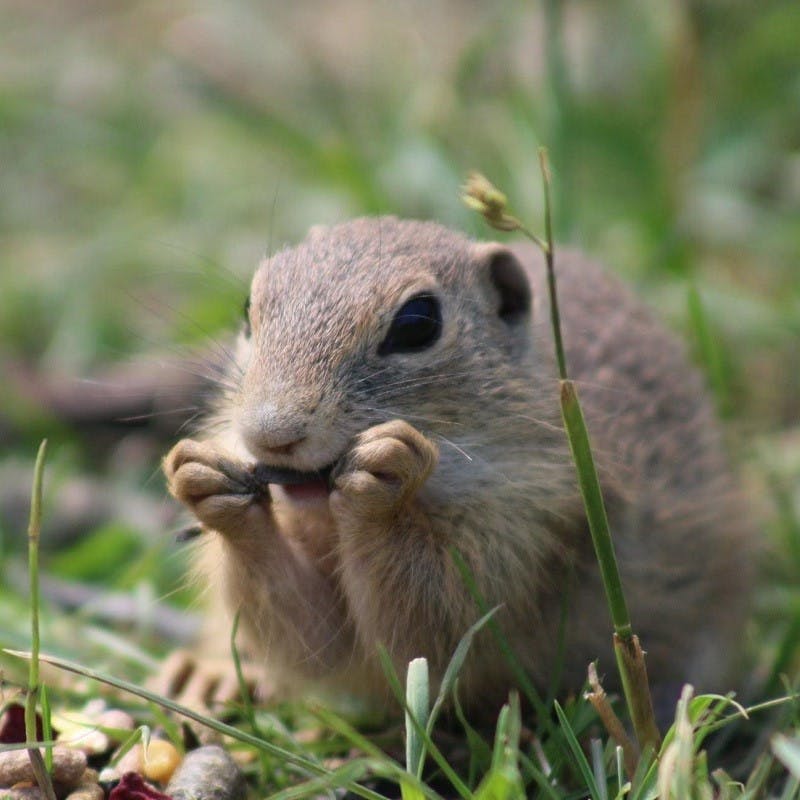
The Problem
Until recent decades, ground squirrel populations had been abundant, to such an extent that they were deemed ‘pests’ as recently as the 1960s. However, the situation has swung drastically in the other direction to the point that recently the species went extinct in both Poland and Germany. Sharp population declines have also occurred in the Czech Republic, Slovakia, Moldova, Northern Greece, and Macedonia. As such, in 2019, European ground squirrels were classified as critically endangered on the European IUCN Red List. In Slovakia since the 1970s, a population decrease of 99% has seen this once familiar grassland rodent become restricted to small isolated populations. The most serious threats causing this alarming decline are:
- Habitat Loss: due to agricultural expansion and urbanisation.
- Habitat Degradation: driven by changes in land use where traditional grassland management activities like extensive grazing and mowing are being abandoned.
- Habitat Fragmentation: which decreases genetic diversity as the colonies cannot disperse and mix as easily. This has led to genetic drift and inbreeding which negatively affects the overall health of the species, decreases resistance to diseases and also the ability to successfully reproduce. Inbreeding causes females to produce fewer offspring (as few as 3 as opposed to as much as 8). Currently, only 3 of the 40 known populations in Slovakia have healthy genetics.
Further to this, ground squirrel population growth is also impacted by:
- Food Availability: the lack of flowering meadows, insects and fruit trees in open landscapes.
- Predation: by domestic cats and dogs also poses a threat.
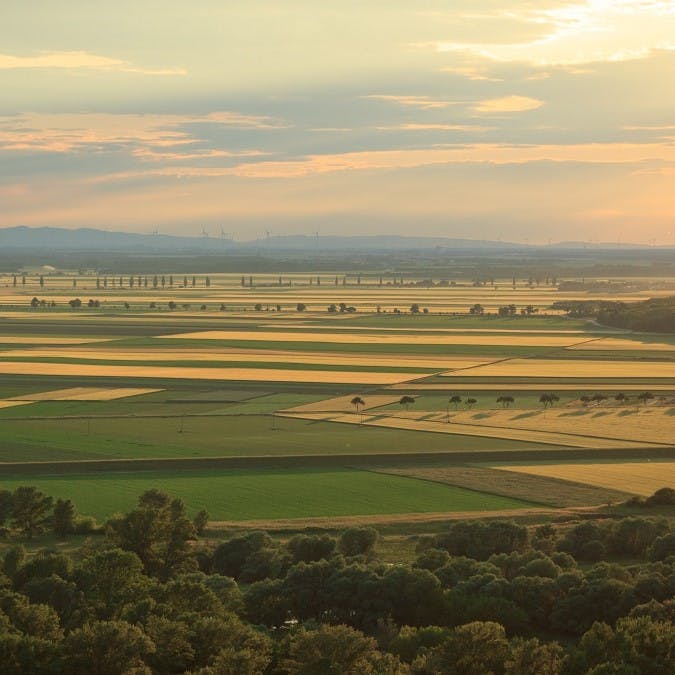
The Risk of Inaction
With such a long list of threats facing this species, its fate is dependent on collective conservation action that is swift and targeted. Should the worrying trend of genetic drift and inbreeding continue, inevitably the remaining isolated populations in Slovakia will further shrink and eventually disappear. The need to intervene now is vital to avoid a scenario where population reductions are so great that they can no longer reproduce successfully.
As the species’ decline continues across Europe, effective conservation efforts by our partner BROZ in Slovakia have seen ground squirrel populations double in the last few years. This impressive outcome achieved as part of the LIFE Sysel project has been attributed to three key interventions:
- Restoring habitat through improved grazing of grasslands.
- Increasing feeding opportunities.
- Translocating individuals between isolated populations.
In partnership with BROZ, we are focusing on continuing this upwards population trajectory by conducting more translocations. This effort is part of the wider LIFE project with national partners: Comenius University, ZOO Bojnice the Slovak State Nature Conservancy.
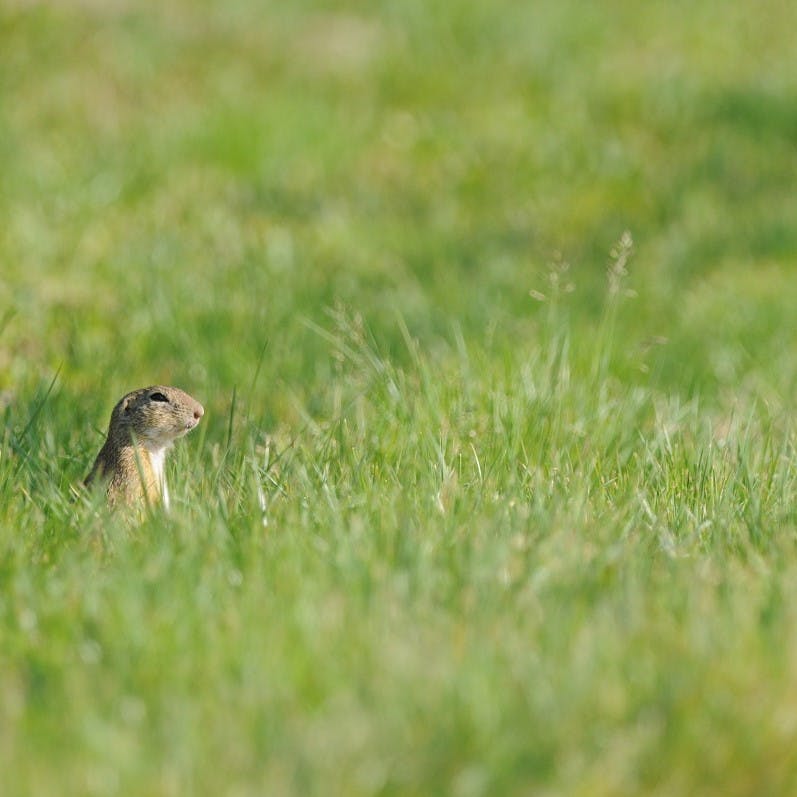
Our Project
The objective of this project is to translocate ground squirrels between populations to help facilitate gene flow and counteract the loss of genetic diversity caused by the fragmentation of their habitat.
Details of the translocation are as follows:
- To trap and translocate at least 600 individuals per year in the period 2023-2027 from 3 donor populations to simulate the natural dispersal process.
- Individuals from 3 donor sites (the only remaining strong populations of ground squirrels with healthy genetics) will be released to 40 recipient sites during a 5-year period, where the small colonies have low genetic diversity. This translocation targets all known colonies of ground squirrels in Slovakia.
- Two waves of capture and release will take place: spring and summer 2023. Young males and pregnant females are targeted in spring and juveniles during summer to mimic the natural dispersal when males seek mating partners, pregnant females build new burrows to give birth and juveniles disperse to establish new colonies.
- A percentage of released individuals are marked for monitoring purposes.
- The squirrels are transported in purpose-built wooden or plastic boxes. As ground squirrels are mainly diurnal (active during the day), the release takes place on the same day for those squirrels caught in the morning or on the next day if they are caught in late afternoon. The boxes are specially designed to reduce the risk of causing injury to the squirrels.
- The squirrels are released into existing burrows called ‘shelter burrows’ which are 30 to 40 cm deep and excavated at an angle to help the animals quickly escape predators.
- The recipient populations are monitored and the number of offspring recorded over the next few years. At the end of the project a genetic study will be carried out by BROZ to compare with the baseline genetic study done at the beginning of the project.
The translocations are informed by the results of a genetic screening study and expert guidance. This is based on the Action Plan for the Conservation of the European Ground Squirrel in the European Union and following a methodology from a Methodical Handbook on the restitution of ground squirrels in Slovakia as well as experience from previous ground squirrel restitution projects across Europe. Additionally, new colonies will be established on suitable sites throughout the project as recommended by the head zoologist.
This series of translocations follows on from the previous translocation in 2022 where 840 individuals were translocated.
This project is pioneering in that it is the first known ground squirrel translocation project of this scale to include baseline data and follow up genetic screening studies. Prior translocations have predominantly focused on restitutions - creating colonies in areas where ground squirrels had gone extinct.
Mossy Earth members have supported the funding of €13,700 each year to cover staff and travel costs for the project. This builds on a previous project in which we supported dwindling ground squirrel colonies in Slovakia by providing supplementary feed and reducing predation pressure.
Project update - August 2025
In this vlog, see how the European ground squirrel is becoming a symbol of conservation in the beautiful Muránska Planina National Park.
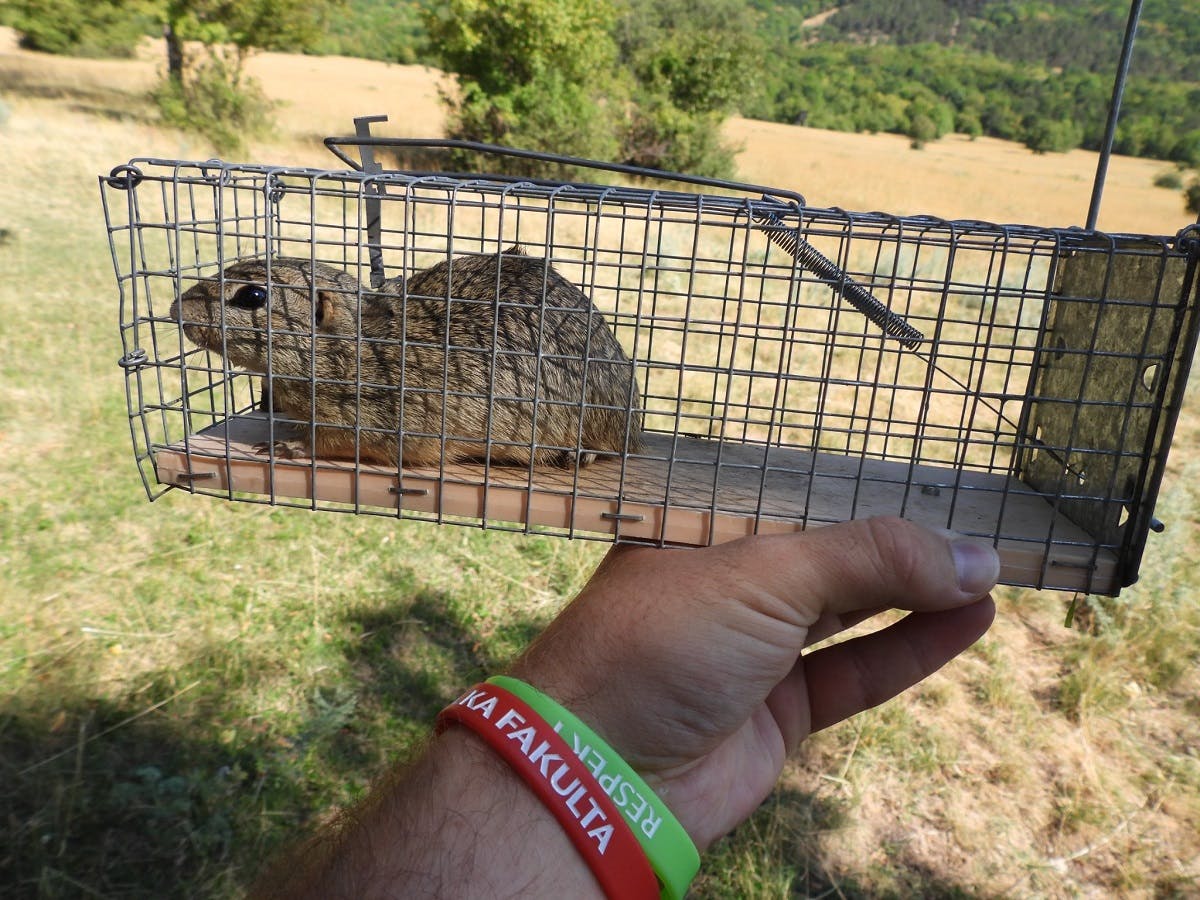
Monitoring & Reporting
Before and after genetic screening studies will take place, conducted by researchers from project partners, University TUZVO - Technical university in Zvolen. The data to be collected and analysed includes basic biometrics of the ground squirrels such as weight, body length, tail length and the length of hind legs.
BROZ will compute a list of all translocated individuals and will monitor the squirrels in the new sites with the help of staff from Faculty of Natural Sciences, State Nature Conservancy and local farmers and volunteers.
The results will be published by experts on genetics and small mammals and will also appear in the European Conference on ground squirrels in 2027 organised by BROZ.
Further interventions will be assessed based on the results of the follow up genetic study to be conducted in 2026.
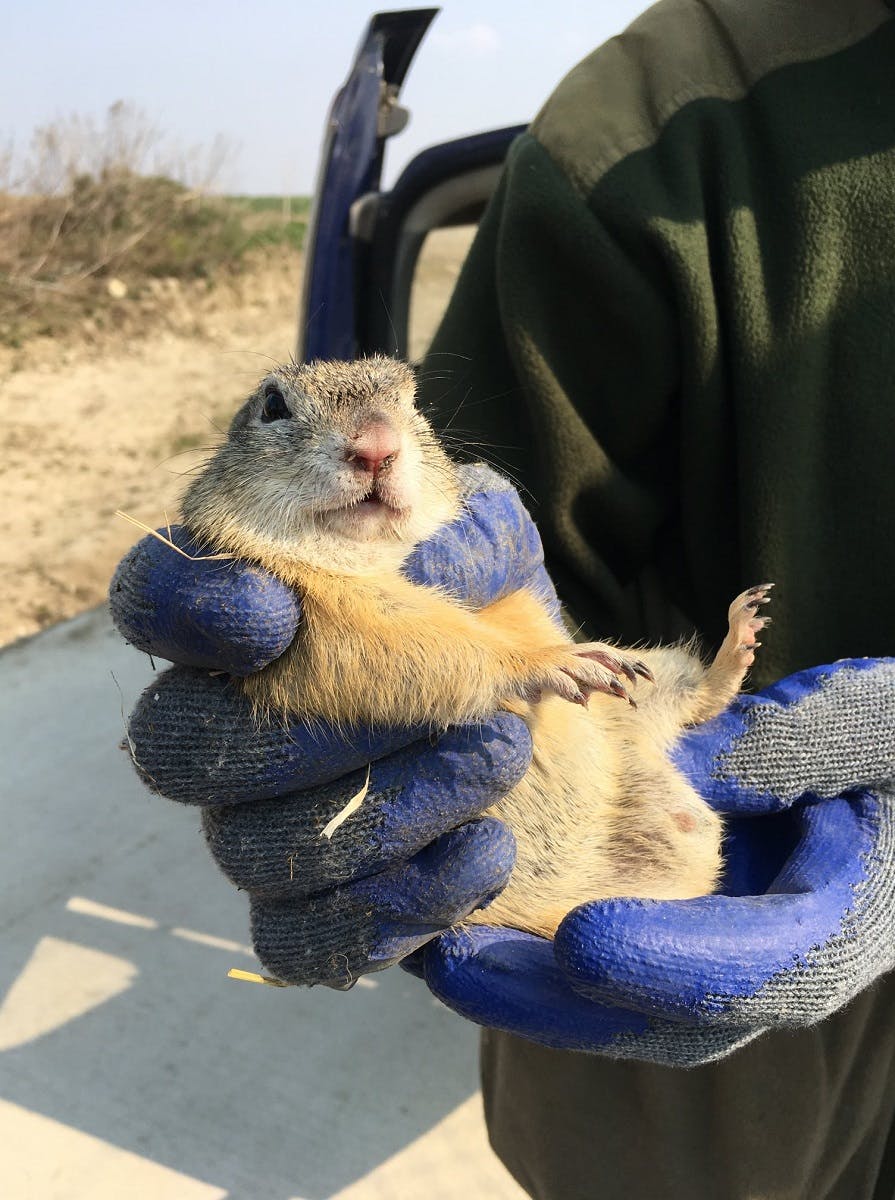
Stakeholder Engagement and Awareness
The chosen sites where the ground squirrels will be translocated to are eligible for a special programme of Agro-environmental subsidies in Slovakia. This will allow stakeholders who manage the sites to receive higher subsidies for the presence of the ground squirrels and favourable management of their habitats.
The majority of the farmers are in favour of having ground squirrels on their land with some wishing for new colonies to be established (through restitution). This represents an opportunity for continuity of this wider effort, although restitution would only be possible providing ground squirrel numbers in Slovakia increase sufficiently and with good genetic fitness. Nevertheless, this is a positive sign and to add to this, awareness among farmers is improving. They usually come to witness the release of ground squirrels and are involved in reporting ground squirrel sightings of released squirrels.
This project also has the potential to boost ecotourism. Ground squirrels are known as an attractive species capable of drawing in crowds.

Translocations
Some images from the translocations in 2023
the team behind the project

Adriana Brossmannova, Conservation Biologist, Mossy Earth
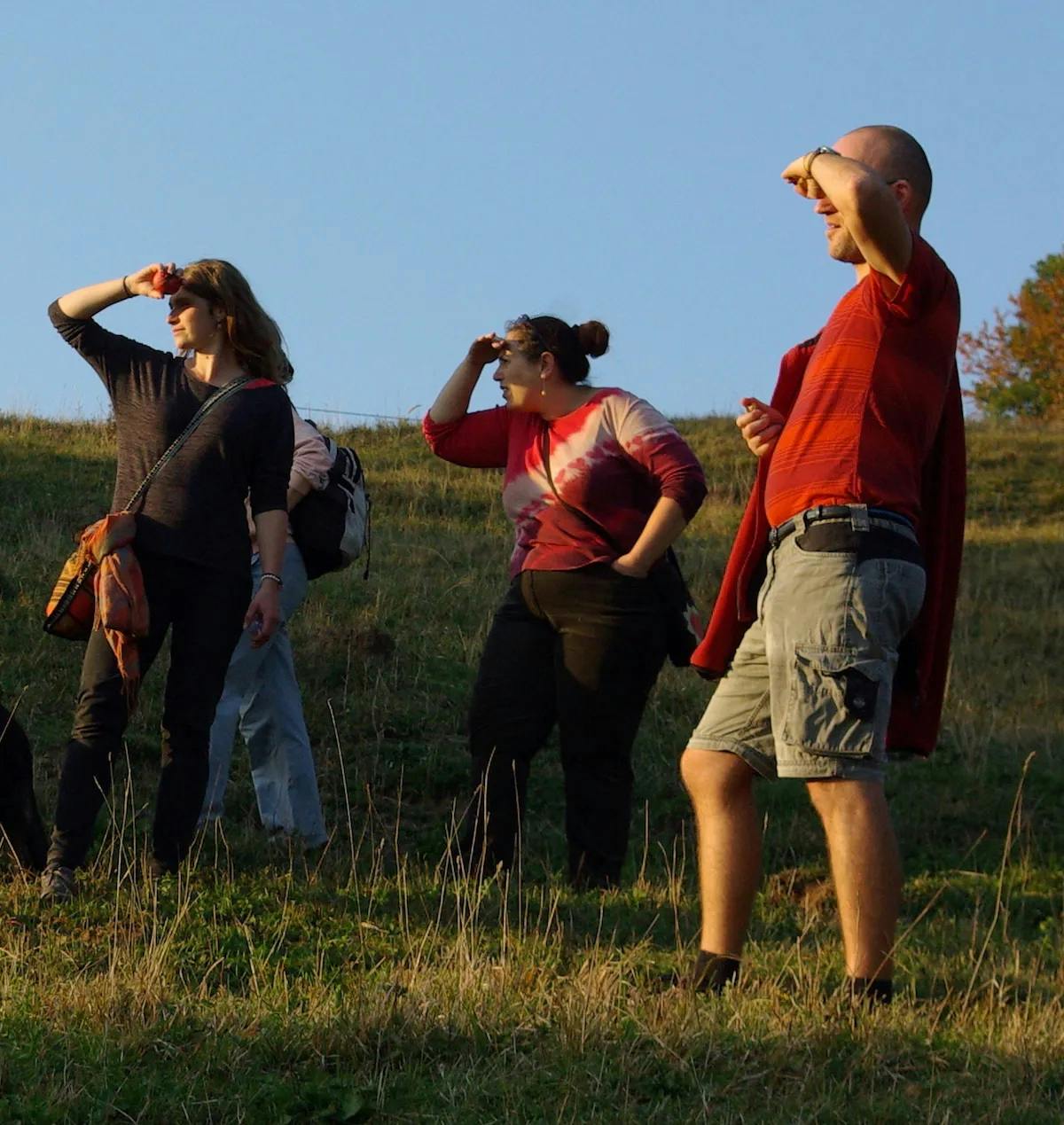
Katarina Tuharska (centre), Project Manager at BROZ
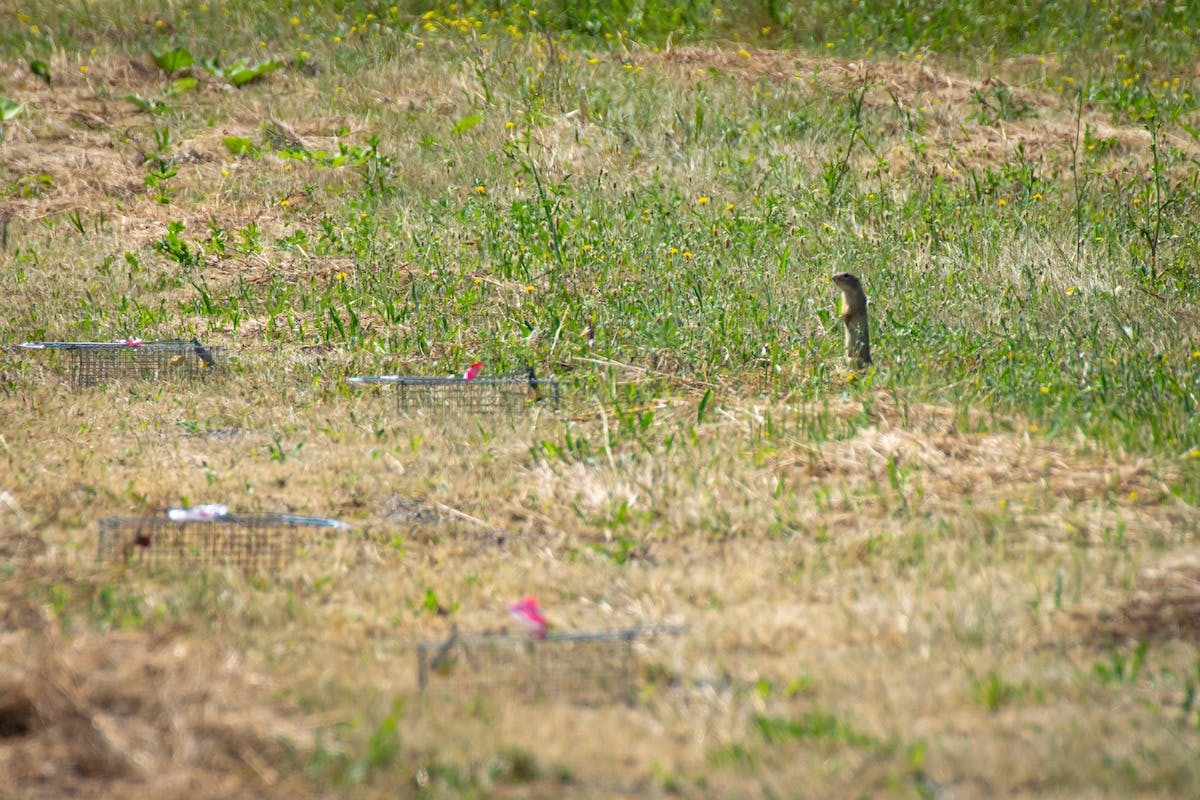
Sources & further reading

- “Action Plan for the Conservation of the European Ground Squirrel Spermophilus citellus in the European Union” - European Union
- “Population genetic structure of the European ground squirrel in the Czech Republic” - Štěpánka Hulová & František Sedláček
